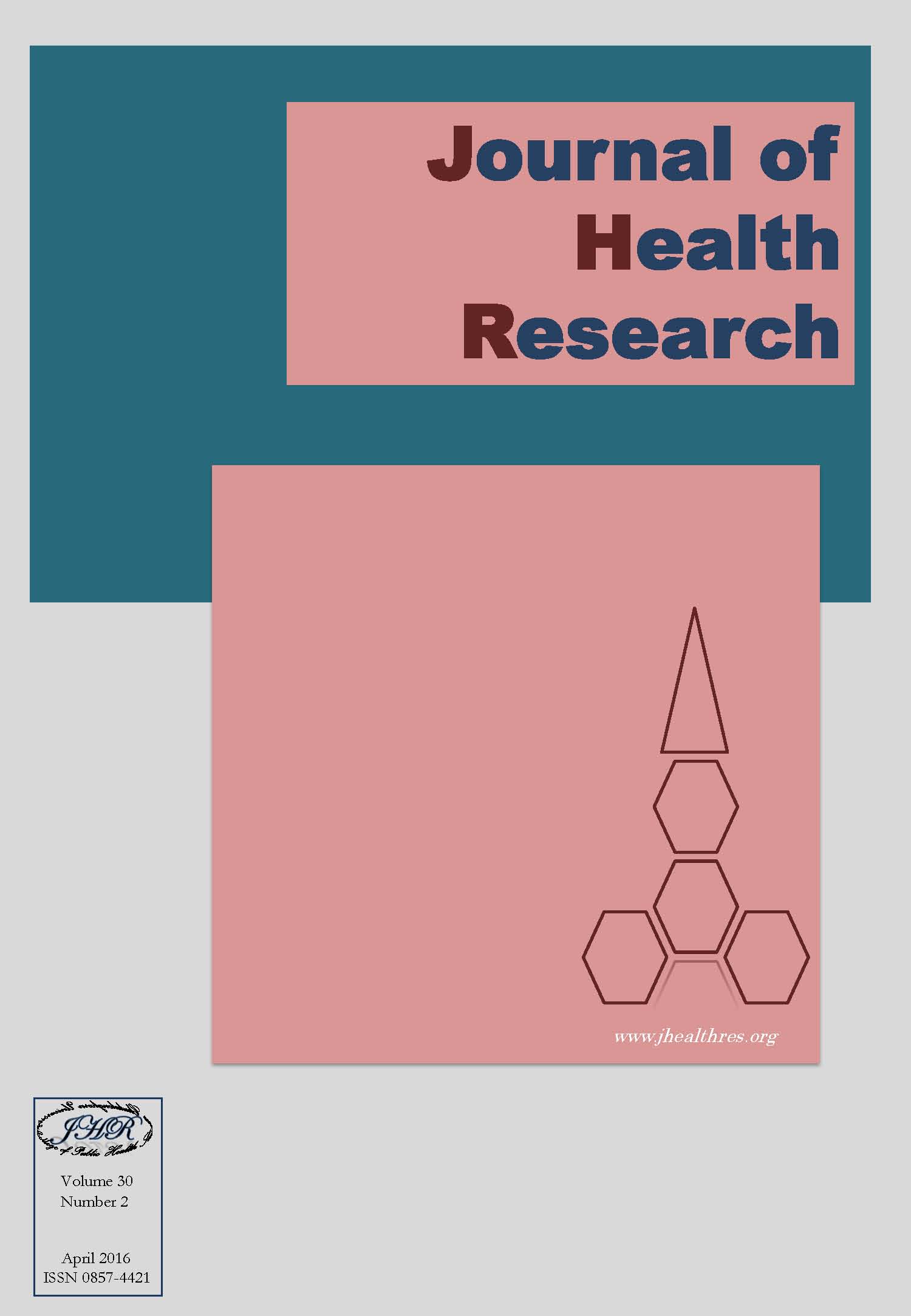Active ageing level in Thailand: a comparison between female and male elderly
Keywords:
Active ageing, Elderly, Health status, ThailandAbstract
Background: Active ageing is a global goal in today's ageing world for meeting the challenges of elderly and for improving their quality of life. Determinant factors of active ageing and their indicators need to be better understood for developing policies and programs focused on active ageing in an ageing society. Thailand has become an ageing society and is going to increase her elderly population but determinant factors and level of active ageing are not known clearly.
Methods: Using exploratory factor analysis on data from the 2011 Survey of Older Persons in Thailand (n=23,801 elderly), attempts have been made to find the determinant factors of active ageing level. Similarity of factor structure (relationships of indicator variables with determinant factors) of active ageing for female and male elderly has been tested. Also, attempt has been made to find the directions of relationships of active ageing level with important indicators (determinant factors).
Results: Results revealed different factor structure of active ageing for female and male elderly. This study found six determinant factors of active ageing for each gender of elderly in the broader cultural context of Thailand. Based on the determinant factors (their scores, and index value), active ageing index (AAI- ranges from 0 to 1) has been estimated. The mean active ageing level for female and male elderly found as 0.66 and 0.62, respectively.
Conclusion: Active ageing level of elderly yet to be improved in Thailand as active ageing level in Thailand is not high (evidenced as far behind the goal). For increasing active ageing level of elderly in Thailand policy should be focused for elderly to fulfill health needs, to promote longer working lives, toarrange lifelong a learning program, and to improve financial/economic conditions.







